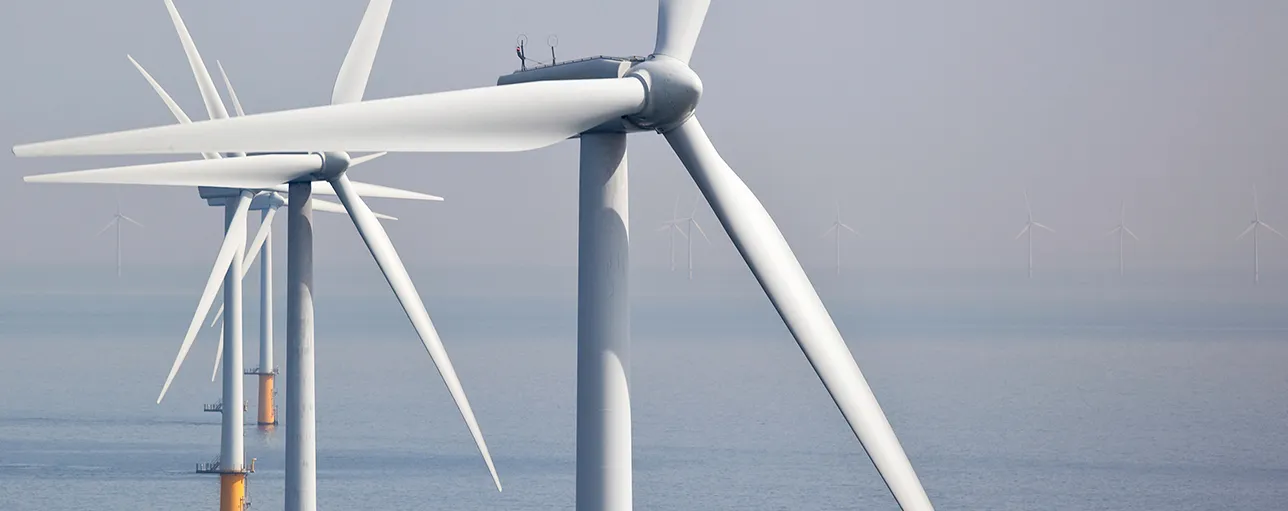The last few years has seen dramatic changes in how offshore wind farms operate, significant cost reductions and improvements in project availability. In 2010, offshore wind projects were expected to have significantly lower availability than those onshore, largely due to project accessibility and harsher environments.
Back then, project operators relied on crew transfer vessels for transporting technicians to turbines and could be reluctant to include helicopters in their access strategies. Operational inexperience was also apparent in budgets, with most operators taking a conservative approach to avoid negative surprises within the project lifetime. Additionally, project owners relied on original equipment manufacturers (OEMs) to run their turbines, only considering taking over operation themselves as an alternative future plan if the OEM wouldn’t fulfil expectations.
Today, European operational projects have reached an average lifetime of seven years, with over 50% surpassing the OEMs’ typical five-year warranty period. These early years have definitely shown that the industry can and is learning. So, what exactly has changed?
Access strategies
Whilst first-generation offshore wind projects were built close to shore, recent developments are located further out in deeper waters, with longer transit times and more onerous climate conditions. These conditions forced operators to explore other transportation methods for getting technicians to sites. One of these options has been the use of helicopters which have significantly reduced transit times. Helicopters are relatively insensitive to wave conditions and are suitable for more frequent, short duration turbine repairs.
For projects even further away, Service Operation Vessels (SOVs) were developed. These large, purpose-built vessels have almost all the facilities needed for servicing a project. They are equipped with heave compensation gangways which significantly improve safe turbine access and are able to stay on site enabling short transit times; having technicians located next to the turbines is a major benefit. The first SOVs reached the European market in 2015. Now, over ten vessels are operating with more being built and chartered.
Technology developments and synergies
SOVs have performed better than expected. Projects have started to show turbine annual availabilities of above 98%, and vessel utilization demonstrates that one SOV can operate projects of 150 or more turbines. For these reasons, SOVs are now being shared, splitting and reducing their operational costs. Furthermore, new vessel technology, such as the Surface Effect Ship (SES), is emerging. SESs could allow short transit times and high accessibility levels at a relatively low cost compared to an SOV-based strategy. Drone inspections have also reduced inspection times and operational costs.
Lessons learnt, competition and self-performance
As some projects have started to take over operations from OEMs, turbine availability improvements of 1-2% are being seen. This has led in some cases to shorter OEM service contracts.
A combination of factors has led to less conservative, more competitive operational budgets. These include better know-how, more competitive service markets, development of operational hubs, synergies between projects and a more developed supply chain. In some cases, technical operational costs (e.g. cost of labour, logistics and parts) have fallen by around 20% due to these factors. Also, due to competition and better understanding of risks, OEMs have started to offer higher availability warranties; leading to a shift from typical 95%-time-based availability warranties to up to 97%-production-based availability warranties.
New turbine generation
The development of larger turbines means fewer are required for a project. Whilst larger turbines might need more servicing time, the facilities and offshore logistics are likely to be similar for a bigger project. Larger turbines produce more energy than older models and are showing significant reliability improvements. This, together with all the improvements mentioned above, has led to a steep decrease in the cost per MWh of offshore wind projects.

